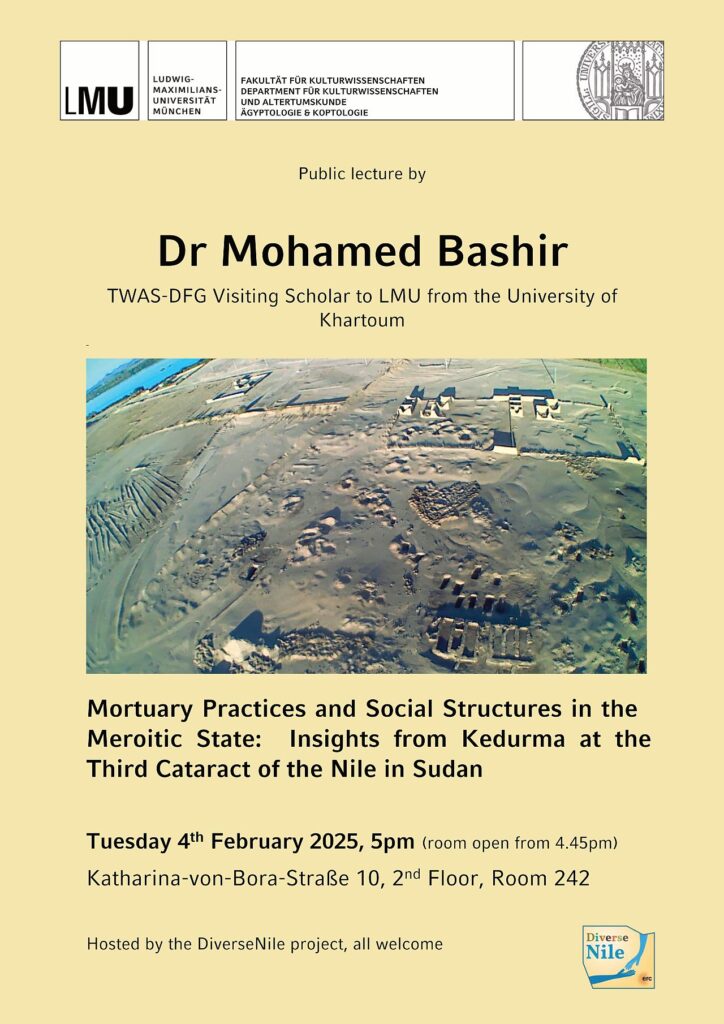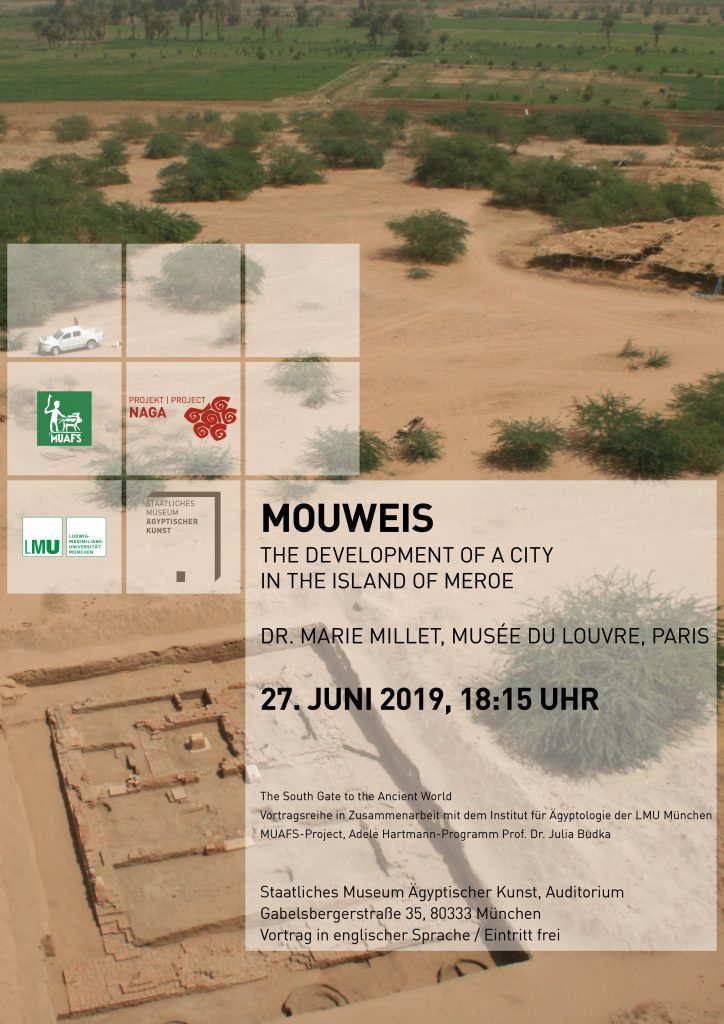I am particularly pleased that Mohamed Bashir has joined the DiverseNile project as a TWAS-DFG Visiting Scholar this week. Mohamed will present his latest excavation results at the site of Kedurma in a public lecture in person on 4th February 2025 – everyone is welcome to attend.

Mohamed has written a summary of his lecture, which I am happy to reproduce here as an incentive not to miss this presentation:
“This research focuses on the archaeological investigation of the Meroitic cemetery of Kedurma in the Middle Nile Valley to examine the funerary practises and social complexity in the Meroitic state of ancient Africa. Recognising that social complexity is crucial for the interpretation of social development, the study identifies different burial customs that reflect different cultural and socio-political dynamics.
The results show a range of burial types and grave goods that indicate stratified social structures and complicated identity formations within the community. In particular, the study of 50 newly excavated tombs shows influences from both ancient Egyptian traditions and local variations, indicating a differentiated approach to mortality and memory. The typology of the tombs reflects different practises that may indicate evolving socio-economic landscapes and interregional exchange.
Overall, this study argues for the importance of local traditions in shaping Meroitic identity and highlights the need to incorporate African archaeological perspectives into broader historical narratives. The complexity of burial practises at Kedurma challenges simplistic notions of social hierarchy and emphasises the dynamic interplay of cultural influences in ancient Nile Valley societies. Through a detailed chronological framework and the analysis of artefacts, the study enriches our understanding of the complex social fabric of early African state societies and underlines the importance of further archaeological investigations to shed light on the historical experiences of the continent.”

